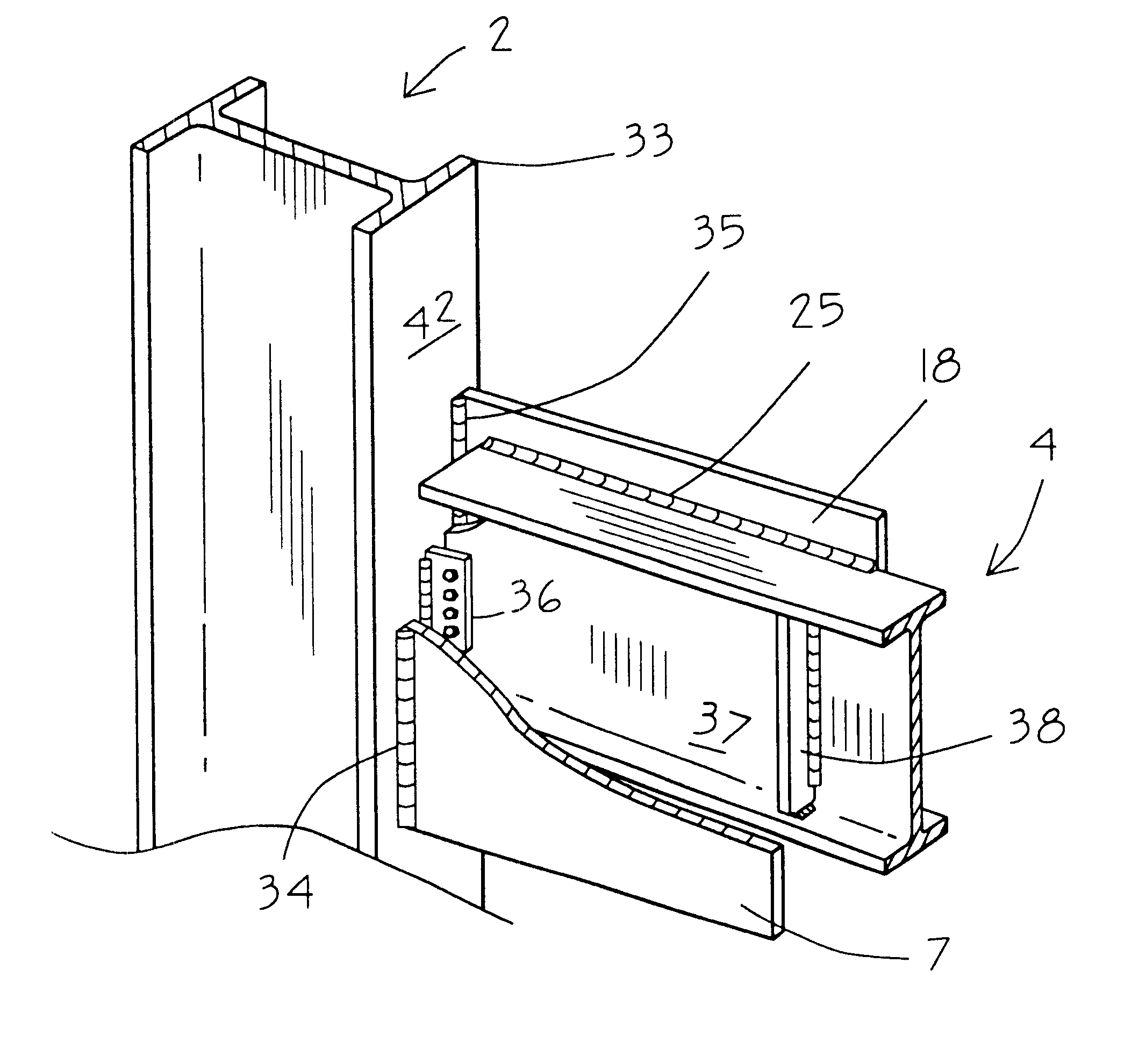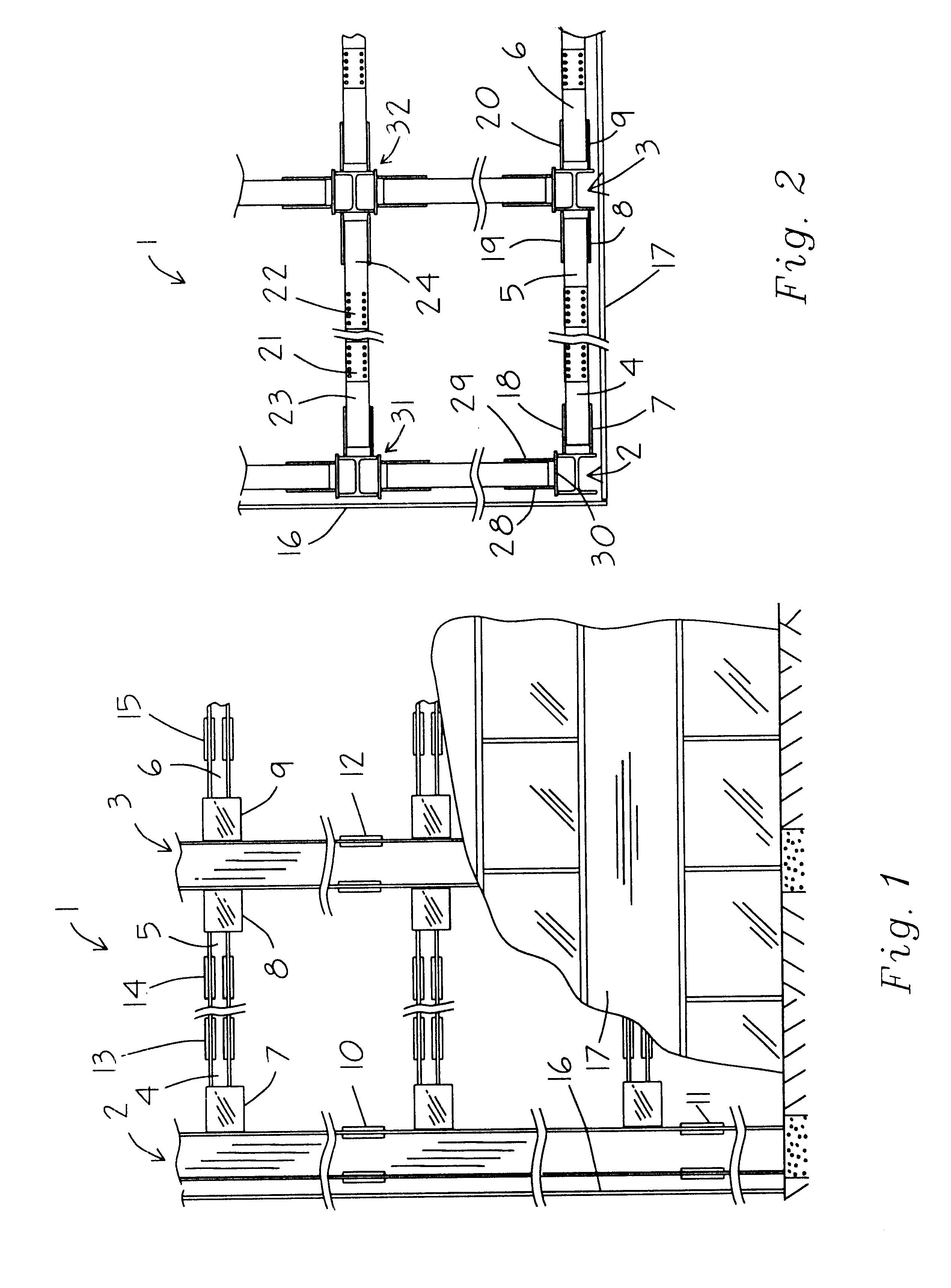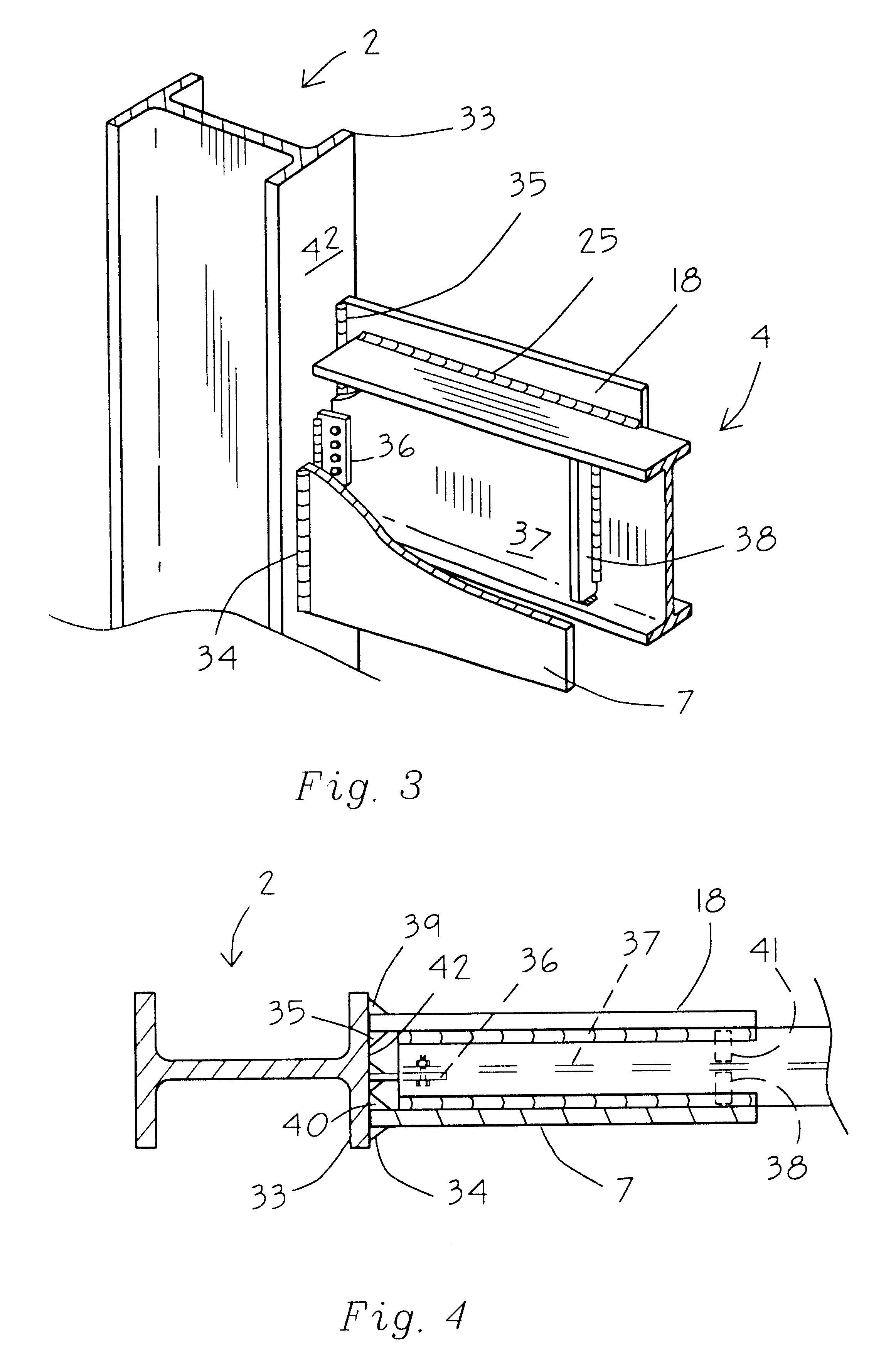Gusset plates connection of beam to column
a technology of gusset plates and beams, applied in the direction of parkings, portal frames, buildings, etc., can solve the problems of unsuitable resistance, uncertain welding practice of beam flanges directly to the column, fractured welds, etc., to increase the load-carrying capacity of steel frame structures, increase lateral and vertical load-carrying capacity, and increase the effect of load-carrying stability and capability
- Summary
- Abstract
- Description
- Claims
- Application Information
AI Technical Summary
Benefits of technology
Problems solved by technology
Method used
Image
Examples
Embodiment Construction
Referring to FIG. 1, there is shown the framework 1 for a moment-resisting building, tower or other structure requiring "primary support" structure. Such "primary support" structure is comprised of columns 2 and 3 and beam sections 4, 5 and 6 and the like. The beam sections 4, 5 and 6 are connected to the columns 2 and 3 through the use of gusset plates 7, 8 and 9. Columns 2 and 3 are spliced together through the use of splice plates 10, 11 and 12, or, alternatively, spliced through full-penetration or partial-penetration groove welds or any other suitable welds. Beam sections 4, 5 and 6 may be spliced together, as shown, through the use of splice plates 13, 14 and 15, or, alternatively, they may be spliced using full-penetration or partial-penetration groove welds or any other suitable welds.
Of course, a single long beam may be used in place of spliced beam sections. So, too, the columns may be constructed in long sections.
Curtain wall 16, shown in elevation, and curtain wall 17, s...
PUM
 Login to View More
Login to View More Abstract
Description
Claims
Application Information
 Login to View More
Login to View More - R&D
- Intellectual Property
- Life Sciences
- Materials
- Tech Scout
- Unparalleled Data Quality
- Higher Quality Content
- 60% Fewer Hallucinations
Browse by: Latest US Patents, China's latest patents, Technical Efficacy Thesaurus, Application Domain, Technology Topic, Popular Technical Reports.
© 2025 PatSnap. All rights reserved.Legal|Privacy policy|Modern Slavery Act Transparency Statement|Sitemap|About US| Contact US: help@patsnap.com



